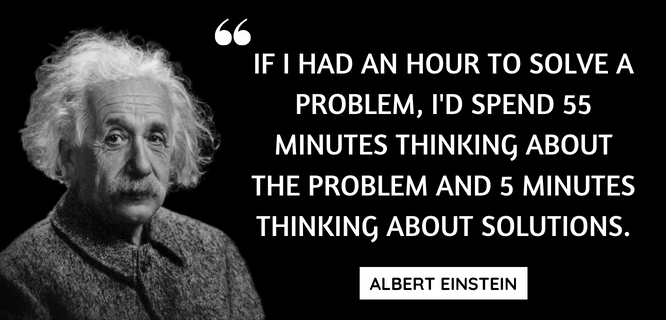Let’s talk about how to quantify what you need to build a business. You’ve probably heard of Kevin Kelly’s idea that you need 1000 true fans to build a sustainable business. If enough people pay you $100 a year, you’ll be on your way to success. So, let’s use that as our starting point. What can you offer right now that would be worth $100 a year to people? Most of us can figure that out, but if you can’t, keep working on creating an offer.
The first step is to figure out where you are in the process. You want to attract the people who will be your loyal customers. That’s why you do workshops, to attract people who resonate with you. It has nothing to do with how articulate or attractive you are. You need to find the people who want what you’re offering.
Take PLR or other content and remake it in your image to create solutions that your people want. Satisfy them by consistently producing and generously giving. This will help you find your true fans.
Don’t worry about what’s happening on other platforms like Warrior Plus or JV Zoo. You need to find your people. Every time you do a workshop, podcast, or video, you’re looking for your people. Don’t get caught up in the medium, whether it’s livestreaming video or podcasts. You need to connect with the people who resonate with you.
There will be people you can’t reach, but you can help some people in a way that no one else can. It’s essential to get out there and put your message in front of people to find your true fans. Quantify what you want to achieve in your business. If $100,000 is your baseline, figure out how you can reach that goal.
That Shiny Vicious Cycle
You and I fall into a lot of vicious cycles, right? This is what we do. We start working on a project, then we hit a roadblock. Why? Maybe we don’t have all the information or tools we need. And so we hit a roadblock. Then we barely finish the project because we didn’t have everything we needed, and it doesn’t turn out as well as we thought it should have.
We then get discouraged, take a break, buy something new and shiny, and get onto a new thing. We never address the underlying issue that we didn’t buy what we needed. We think, “I don’t want to buy this. It’s too expensive,” and we end up buying something cheap that we never use. But if we just went and bought what we needed and started using it, it would make all the difference.
For example, I avoided buying Wishlist Member for years, trying out other membership plugins and scripts, but nothing worked for me. One day, my daughter, who used to run our support desk, said we needed to get rid of ClickFunnels because it was confusing customers. So, after eight years of avoiding it, I finally bought Wishlist Member, and I wish I had done it from the beginning.
I’m not telling you to go out and spend a bunch of money. What I’m saying is, if you need to buy something, you need to buy it, and it doesn’t matter if it’s not on the launch price. You must move from survival mode to thinking about this differently. If you know you need something, get it. If you stop buying things just because they’re on the launch price, you’ll then have the money to get the things you need. And in the end, you won’t care what you paid for it if it helps you achieve your goals.
I call this the library versus the bookstore. Sometimes, I go to the library, and when you have an overdue book, it costs you a quarter every day. But if you go to the bookstore and buy a book, you don’t have that deadline. You can keep the book as long as you want, and you can read it repeatedly. It’s the same with investing in yourself. You might pay more upfront, but you’ll have that knowledge for the rest of your life. It’s an investment that will pay off in the long run.

Delaying the process, you need to go through will not help your business. It doesn’t matter if Wishlist Member works for me and not for you. What matters is what makes sense to you. So, if something costs $1997 and it makes sense for your business, don’t try to get it for free. Calculate the number based on the average price of your product and look at your funnels to determine how many front end sales it will take to reach your goal.
This is not rocket science; it’s math. Calculate the typical conversion rate for the products you’re working with. This will tell you how many affiliates you need and how many people you need to get on your list. If you don’t measure what you’re doing every day, you won’t be able to change it. Attend conferences to meet people who can help you promote your product, as it can make all the difference.
I can assure you that everything positive that happened to me from 2013 to 2017 was because of an expensive conference I attended. You may think it’s not worth it, but every conversation counts. At the last conference I went to, I spoke with only three people, and they all became JV partners for me. So, think differently about it, and it will help you.
Always Go Back To These Main Qualifying Points
Whenever you start to get discouraged, experience a professional failure, or find yourself attracted to the next push-button shiny product being pitched by all the marketers you subscribe to, sit down and remind yourself of the following values:
- The value of investing in yourself: Sometimes, you need to spend money to get the tools and resources you need to grow your business. However, it’s important to be strategic about your investments and only buy things that will truly help you achieve your goals. Don’t get caught up in buying things just because they’re on sale or because you think they’ll magically solve all your problems.
- The importance of measuring your progress: If you want to make progress in your business, you need to track your results and adjust your strategy as needed. This means calculating conversion rates, analyzing your funnel metrics, and keeping an eye on your ROI. Only by measuring your progress can you identify areas that need improvement and make meaningful changes to your business.
- The value of networking: Attending conferences, joining mastermind groups, and networking with other entrepreneurs can be incredibly valuable for building your business. You never know who you might meet or what opportunities might arise from a simple conversation. Don’t underestimate the power of human connections in growing your business.
Why Qualifying Matters
When you begin your business planning from a mathematical perspective, based on the lifestyle and income you want, you can reverse engineer your goals and plan accordingly.
It may sound relatively simple (and it is) but most entrepreneurs don’t bother to do this when first starting out. This should be the very first step you take on your journey to become a success in anything you do.
To illustrate my point I put together a few, easy to read, examples of how quickly qualifying can help you define your goals, and marketing budget.
The Meditation Example
Let’s say you are an expert in meditation, and you want to create a sustainable business around your expertise. According to the “1000 True Fans” idea, you need to attract 1000 people who are willing to pay you $100 a year.
So, you need to figure out what you can offer that is worth $100 a year to people interested in meditation.
You could create a membership site where you offer exclusive guided meditations, a private Facebook group for members to connect and share their experiences, and weekly live Q&A sessions with you.
If you can attract and retain 1000 members, you’ll have a sustainable business.
The Graphics Designer Example
Let’s say you are a graphic designer, and you want to create an online course teaching people how to design logos.
Your goal is to earn $100,000 a year from the course.
You need to figure out how many students you need to enroll and what price point will get you there.
Now, let’s say you charge $500 for the course. You need 200 students to enroll to reach your goal. If you can convert 5% of your email list to enroll in the course, you need an email list of 4000 people.
So, your task is to build an email list of 4000 people interested in logo design, and then create and market a course that appeals to them. Meaning, you need to adjust your budget and perspective to focus on building that lead generation email list!
The Author/Writer Example
Let’s say you are a writer and you want to sell more books. Your goal is to earn $50,000 a year from book sales.
You need to figure out how many books you need to sell and at what price point to reach your goal.
Let’s say you price your book at $10 and earn $5 per book after expenses.
You need to sell 10,000 books to reach your goal. If you can convert 1% of your email list to buy the book, you need an email list of 1 million people.
So, your task is to build an email list of 1 million people interested in your genre and then create and market books that appeal to them.
You could also explore other revenue streams like speaking engagements or merchandise sales to supplement your book income.
Conclusion
In conclusion, quantifying your information marketing goals is a crucial step towards achieving success in your business.
By setting specific, measurable, achievable, relevant, and time-bound (SMART) goals, you can better understand your target audience, determine the effectiveness of your marketing efforts, and make data-driven decisions to improve your overall strategy.
Remember to regularly track and analyze your progress towards your goals, and adjust your approach as needed to stay on track towards success.
With a clear understanding of your goals and the right tools and strategies in place, you can build a strong foundation for a thriving information marketing business.





